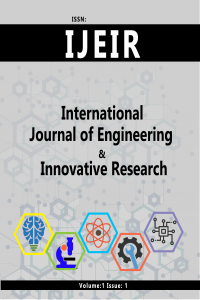Simulation of a gas turbine plant using Evaporative cooler
Simulation of a gas turbine plant using Evaporative cooler
Gas turbine plant, Evaporative cooler,
___
- 1. Abbas RASAIENIA, Behzad MOSHIRI and Mohammadamin MOEZZI, (2009): “Feature-based fault detection of industrial gas turbines using neural networks” Journal of electrical engineering and computer science, vol. 21, pp15.
- 2. Amell .A. A. and Cadavid .F, (2002): “Influence of the relative humidity on the air cooling thermal load in gas turbine power plant” Applied thermal engineering, vol. 35, 22(13):1529-1533.
- 3. Emmanuel Kakaras, Doukelis .A, Prelipceanu .A andKarellas .S (2006): “inlet air cooling methods for gas turbine based power plant”, Journal of engineering for gas turbine and power, 128 (2).
- 4. Farzaneh-Gord and Deymi-Dashtebayaz, (2011): “Effect of various inlet air cooling methods on gas turbine performance energy”, Energy, vol. 36, pp. 1196-1205, 2011.
- 5. Meher-Homji C.B., Mee, T. R.(2000): “Inlet Fogging of Gas Turbine Engines, Part A: Theory, Psychometrics and Fog Generation”, Proceedings of ASME Turbo Expo, Munich.
- 6. Thamir K. Ibrahim, M. M. Rahman and Ahmed N., (2011): “Improvement of gas turbine performance based on inlet air cooling systems”: A technical review, International Journal of Physical Sciences, Vol. 6, no. 4, pp. 620-627.
- Yayın Aralığı: Yılda 3 Sayı
- Başlangıç: 2018
- Yayıncı: Ahmet Ali SÜZEN
SENSITIVITY ANALYSIS OF A SOLAR ORGANIC RANKINE CYCLE
Eghosa OMO-OGHOGHO, Sufianu ALİU
Simulation of a gas turbine plant using Evaporative cooler
İjeoma ILUOBE, Eghosa OMO-OGHOGHO, Sufianu ALİU, Mobolaji Humphrey OLADEİNDE
REALIZATION OF A BUILDING AUTOMATION SYSTEM USING PLC AND SCADA
THERMODYNAMIC MODELLING OF A SOLAR POWERED ORGANIC RANKINE CYCLE
